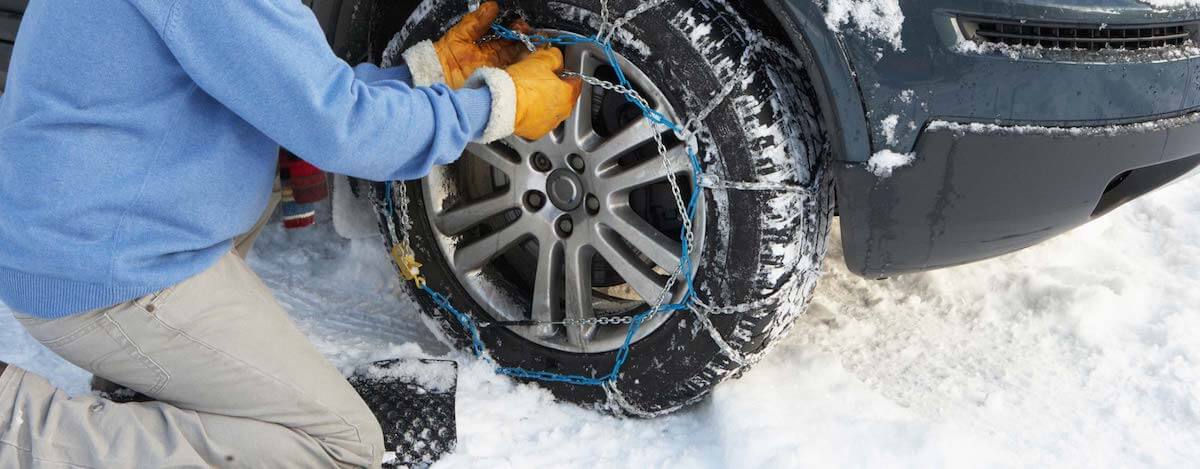Winter is officially here, and along with it comes snowstorms, black ice, and other dangerous driving conditions. While experienced drivers in regions that regularly experience winter weather generally know how to deal with winter driving conditions, new drivers and those who live in areas not typically affected with extreme winter weather may not know how to with poor road conditions. Losing traction in the snow can be a driver’s worst nightmare and tire chains can be an effective solution; however, it is important to know when and how tire chains should be used.
The use of tire chains may be regulated by law and different states have different laws regulating their usage. Before purchasing or installing chains on your tires be sure to check whether they are legal in your state. Additionally, some states may require tire chains in order to drive in certain areas. If you are new to a state, or plan on traveling in a state that experiences extreme winter weather, check to see if you will be required to carry/install tire chains to pass checkpoints.
Additionally, when purchasing tire chains for your vehicle, it is important to make sure that they properly fit the tires as well as the vehicle. While tire chains are available for most tire sizes, it is important that there is sufficient clearance for them to fit without damaging the body, brakes, or undercarriage of the vehicle. To find this information check the owner’s manual for specifications and allowances.
It is important that you know how to install and use your tire chains before bad weather hits. Practice putting the chains on and taking them off several times before you actually need them. Getting the hang of this now means you are not stuck fumbling around and trying to get them installed in icy, soggy, or snowy conditions with freezing fingers. Also, remember to keep a safety vest, flares, and safety cones in your vehicle; this way if you have to install or adjust the chains on the side of the road in low visibility conditions you can alert other drivers.
Finally, know what road and weather conditions call for tire chains. You should only use tire chains on your vehicle when there is a layer of snow or ice on the road. Tire chains should not be used on bare pavement as it can damage both your tires and the road itself. If you get to a road that is clearly plowed and salted, pull over and remove the chains. Additionally, when your tires have chains on you should not drive above 30mph.
Make sure tire chains are properly installed. If you have a four-wheel drive vehicle chains should be installed on all four tires. If you have a two-wheel drive vehicle, ideally, you should still have chains on all four tires. However, if you only install chains on two tires on a two-wheel drive vehicle, make sure they are installed on the drive axle.
Even with tire chains winter weather accidents and breakdowns can happen. Purchasing roadside assistance coverage protects you in the event of a winter roadside emergency. Emergency roadside assistance plans cover towing, lost keys or lockouts, running out of gas, dead batteries, and all the other things that can go wrong with your vehicle. Purchasing a plan through Best Roadside Service will cover you in the event your car slides off the road during a winter storm, you run out of gas, or you look your keys in your running car while warming it up. In addition, national chains including Meineke, Aamco, and Jiffy Lube offer discounts to Best Roadside Service customers for car repairs and maintenance. Best Roadside Service offer plans for less than $80 a year, much below the average cost of a single tow, which can range from $120 and up.
Tire chains can make a real difference during the winter months. Extreme road conditions can make it almost impossible to drive. When used safely and appropriately, tire chains can help you get where you need to be all winter long.





